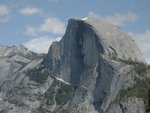DIAGNOSTIC DISCUSSION
issued by
CLIMATE PREDICTION CENTER/NCEP
10 September 2009
ENSO Alert System Status: El Niño Advisory
Synopsis: El Niño is expected to strengthen and last through the Northern Hemisphere winter 2009-2010.
A weak El Niño continued during August 2009, as sea surface temperature (SST) remained above-average across the equatorial Pacific Ocean (Fig. 1). Consistent with this warmth, the latest weekly values of the Niño-region SST indices were between +0.7oC to +1.0oC (Fig. 2). Subsurface oceanic heat content (average temperatures in the upper 300m of the ocean, Fig. 3) anomalies continued to reflect a deep layer of anomalous warmth between the ocean surface and the thermocline, particularly in the central Pacific (Fig. 4). Enhanced convection over the western and central Pacific abated during the month, but the pattern of suppressed convection strengthened over Indonesia. Low-level westerly wind anomalies continued to become better established over parts of the equatorial Pacific Ocean. These oceanic and atmospheric anomalies reflect an ongoing weak El Niño.
A majority of the model forecasts for the Niño-3.4 SST index (Fig. 5) suggest El Niño will reach at least moderate strength during the Northern Hemisphere fall (3-month Niño-3.4 SST index of +1.0oC or greater). Many model forecasts even suggest a strong El Niño (3-month Niño-3.4 SST index in excess of +1.5oC) during the fall and winter, but current observations and trends indicate that El Niño will most likely peak at moderate strength. Therefore, current conditions, trends, and model forecasts favor the continued development of a weak-to-moderate strength El Niño into the Northern Hemisphere fall 2009, with the likelihood of at least a moderate strength El Niño during the winter 2009-10.
Expected El Niño impacts during September-November 2009 include enhanced precipitation over the west-central tropical Pacific Ocean and the continuation of drier-than-average conditions over Indonesia. Temperature and precipitation impacts over the United States are typically weak during the Northern Hemisphere summer and early fall, generally strengthening during the late fall and winter. El Niño can help to suppress Atlantic hurricane activity by increasing the vertical wind shear over the Caribbean Sea and tropical Atlantic Ocean (see the Aug. 6th update of the NOAA Atlantic Seasonal Hurricane Outlook).
This discussion is a consolidated effort of the National Oceanic and Atmospheric Administration (NOAA), NOAA’s National Weather Service, and their funded institutions. Oceanic and atmospheric conditions are updated weekly on the Climate Prediction Center web site (El Niño/La Niña Current Conditions and Expert Discussions). Forecasts for the evolution of El Niño/La Niña are updated monthly in the Forecast Forum section of CPC's Climate Diagnostics Bulletin. The next ENSO Diagnostics Discussion is scheduled for 8 October 2009. To receive an e-mail notification when the monthly ENSO Diagnostic Discussions are released, please send an e-mail message to: ncep.list.enso-update@noaa.gov.
Climate Prediction Center





National Centers for Environmental Prediction
NOAA/National Weather Service
Camp Springs, MD 20746-4304


